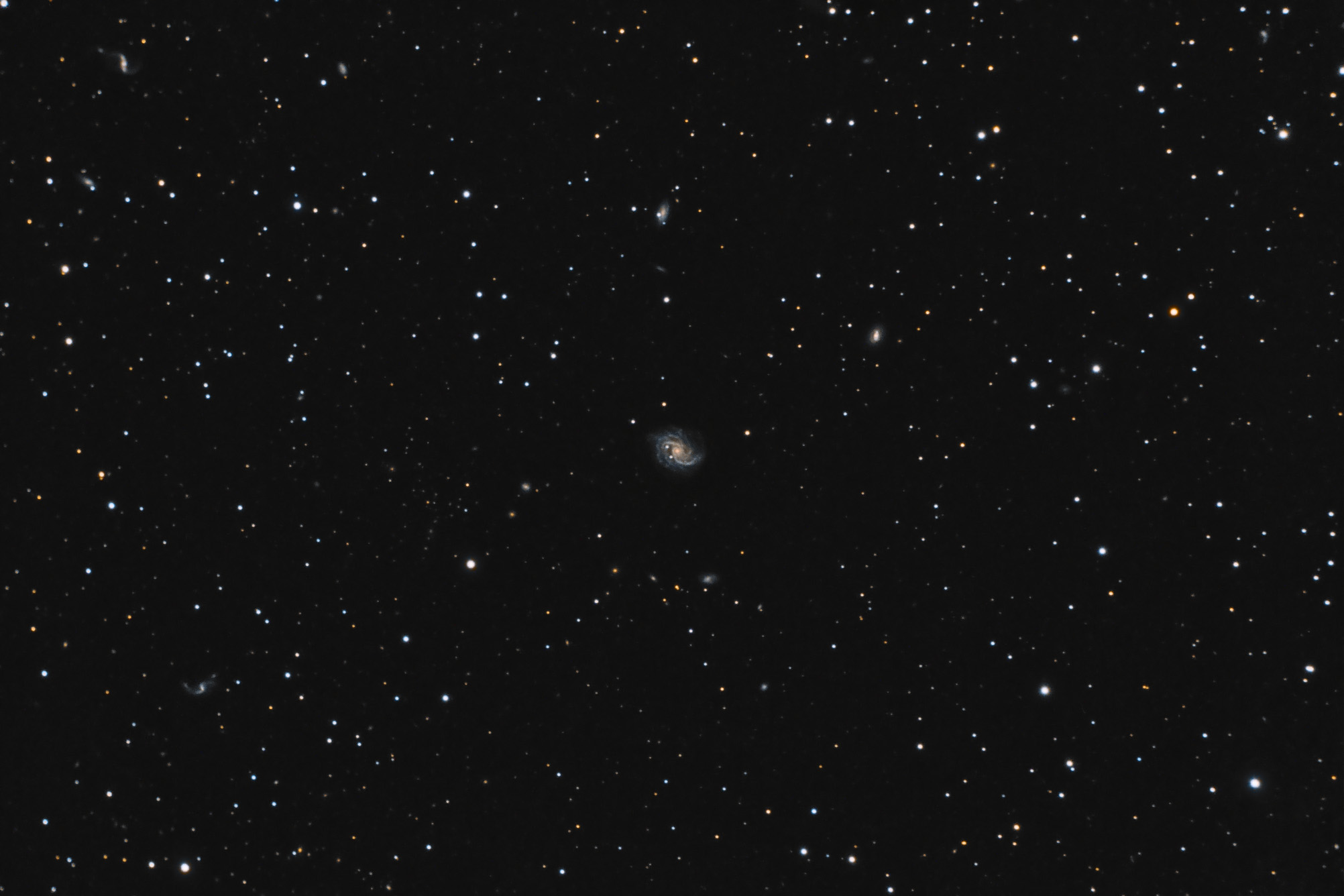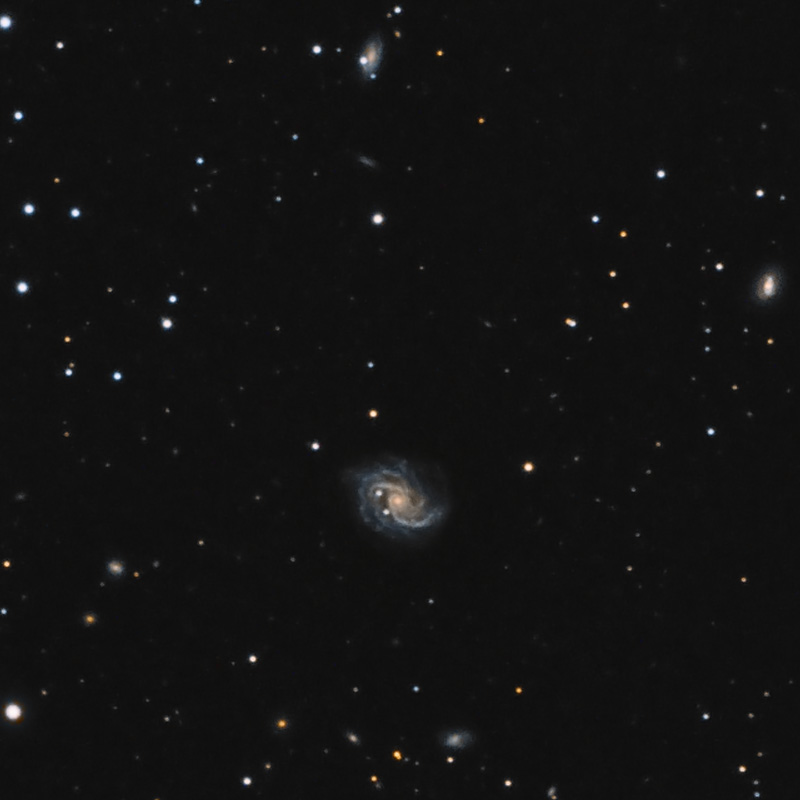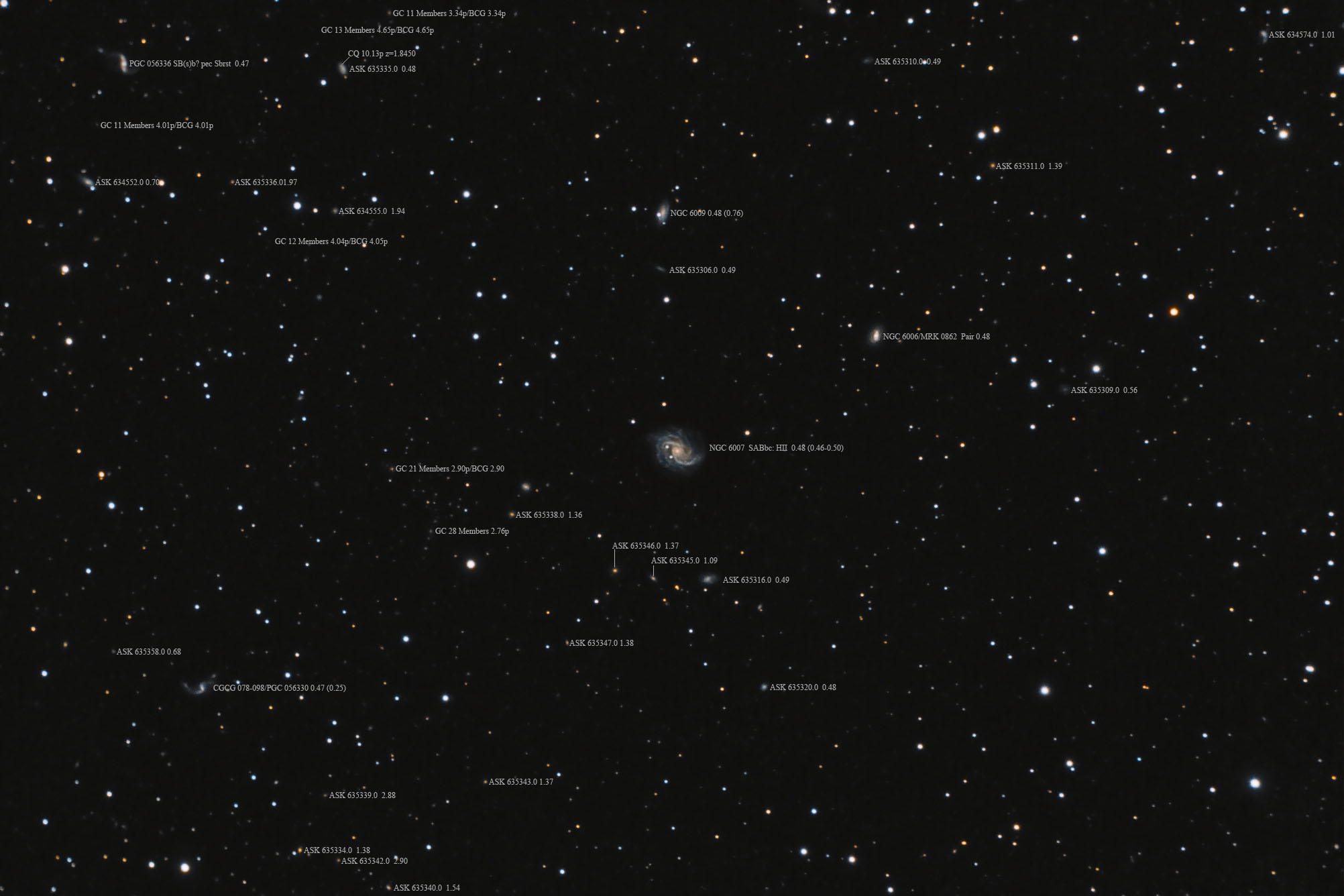| Description | Images |
Object name: NGC6007Designation(s): NGC6007, NGC6006, NGC6009, NGC 6007 is a rather strange looking spiral in Serpens Caput about 480 million light-years distant. The arm structure is quite unique, far from a classic grand design spiral. First off it is huge for a spiral at nearly 220,000 light-years in size. One main arm comes off the north side the core then makes a sudden turn around the core, goes straight for a bit then curves away getting broader and brighter as it goes. It's not obvious any other arm comes off the core. The only other "major" arm runs in a straight line above the core until it passes a field star with with another field star of similar brightness below it. The arm seems to know of these and hooks neatly around them ending just beyond the lower star. While the straight portion holds its brightness as it reaches the field star it fades away. Several other much shorter arm segments are seen including on that seems to come off the west end of this upper arm and which pretty much follows the same path, just further out though it has a curve rather than being straight. As it goes south it appears full of star knots that give it a someone kinky appearance bending first this way then that way. How did this huge galaxy get this way? I suppose it is due to interaction with other galaxies in the group, some of which it may be still digesting. There are many other galaxies at the same redshift in the field that appear as dwarfs by comparison but actually are rather large. NGC 6007 was discovered by Albert Marth on June 2, 1864, the same night as he found NGC 6006 and 6009 discussed below. Related Designation(s):2MASS J15530256+1200193, 2MASS J15532317+1157329, 2MASS J15532408+1203312, 2MASX J15530253+1200191, 2MASX J15532317+1157327, 2MASX J15532407+1203311, 2MASXi J1553026+120019, 2MASXi J1553231+115735, 2MASXi J1553240+120331, AGC 251317, AGC 251319, ASK 634570.0, ASK 634580.0, ASK 635312.0, CGCG 078-093, CGCG 078-095, CGCG 078-096, CGCG 1550.6+1210, CGCG 1551.0+1206, CGCG 1551.1+1213, GALEXASC J155302.56+120018.7 , GALEXASC J155324.12+120329.7 , IRAS 15510+1206, IRAS F15506+1209, IRAS F15510+1206, MCG +02-40-018, MRK 0862, NFGS 174, NGC 6006, NGC 6007, NGC 6009, NGC6006, NGC6007, NGC6009, NPM1G +12.0445, NSA 114349, NSA 166495, NVSS J155303+120018, NVSS J155323+115732, PGC 056295, PGC 056309, PGC 056312, SDSS J155302.56+120019.3, SDSS J155323.17+115733.0, SDSS J155323.18+115733.0, SDSS J155324.09+120330.7, SDSS J155324.09+120330.8, SDSS J155324.10+120330.8, SDSS-i-bar-0475, SDSS-i-fon-1388, UGC 10079, USGC U731 NED04, USGC U731 NED05, UZC J155302.6+120019, UZC J155323.2+115732, UZC J155324.3+120330, [TTL2012] 162240, [TTL2012] 162628, [TTL2012] 165768, | Permanent link: https://images.mantrapskies.com/catalog/NGC/NGC6007-NGC6006-NGC6009/NGC6007L4X10RGB2X10.JPG |


